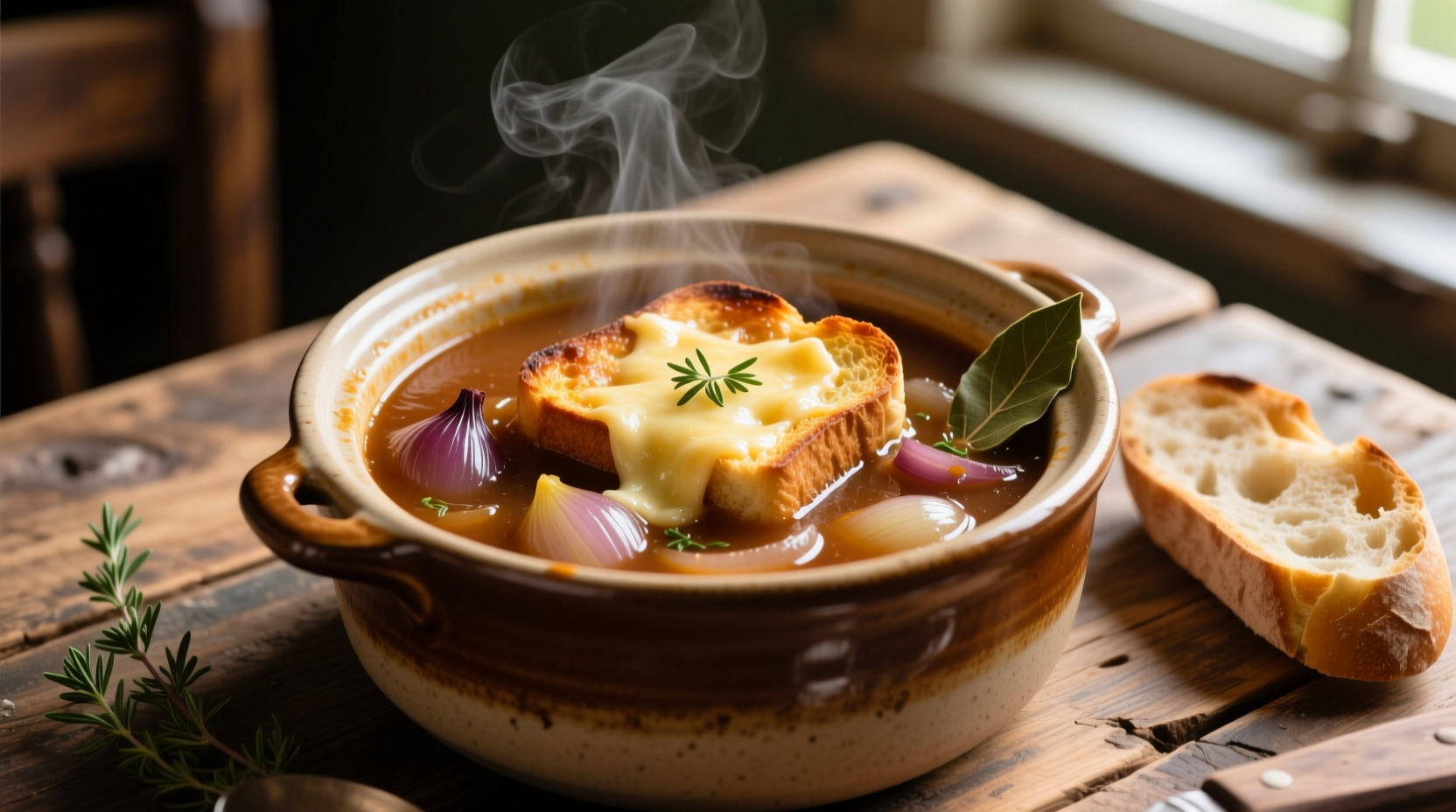When you first taste authentic French onion soup, you're greeted by the profound sweetness of slowly caramelized onions that have undergone the Maillard reaction, transforming their natural sugars into complex flavor compounds. This foundational sweetness is perfectly balanced by the deep savory notes of quality beef broth, creating a harmonious interplay that defines the soup's essence. The subtle tang of dry white wine or sherry vinegar adds brightness that cuts through the richness, while the signature cheese topping—typically Gruyère or Emmental—melts into the broth to create a luxurious, nutty finish with pronounced umami characteristics.
The Flavor Journey: What to Expect in Every Bite
Understanding French onion soup's taste requires experiencing its multi-layered flavor development. The initial sip reveals the soup's aromatic foundation: onions cooked slowly over several hours until they reach a deep golden-brown color, developing over 400 distinct flavor compounds through caramelization. This process creates notes of butterscotch, honey, and even subtle fruit undertones that distinguish it from simply using raw onions.
As the broth hits your palate, you'll notice the savory depth from quality beef stock, which provides the essential umami backbone. Traditional recipes often include a splash of dry white wine or vermouth that adds a delicate acidity, preventing the soup from becoming cloying. The final element—the broiled cheese topping—melts into the hot soup, creating a rich, nutty layer that enhances the overall complexity with its distinctive earthy notes.
Texture and Temperature: Completing the Experience
French onion soup offers a distinctive textural experience that contributes significantly to its overall taste perception. The onions should be tender but still maintain some structure, providing a satisfying chew that contrasts with the smooth broth. When served traditionally in a heavy ceramic bowl with toasted baguette slices and melted cheese forming a crisp crust on top, the temperature contrast enhances flavor release—hot broth against the slightly cooler, chewy bread and molten cheese creates a dynamic sensory experience.
| Flavor Component | Primary Taste Sensation | Key Contributing Ingredients |
|---|---|---|
| Sweetness | Deep caramel notes | Slowly caramelized onions (3-4 hours) |
| Umami | Savory depth | Beef broth, aged cheese topping |
| Acidity | Brightening element | Dry white wine or sherry vinegar |
| Nuttiness | Earthy finish | Gruyère or Emmental cheese |
How Preparation Affects Flavor Profile
The taste of French onion soup varies significantly based on preparation methods. Authentic versions require patience—onions must caramelize slowly over low heat for 3-4 hours to develop complex flavors without burning. Rushing this process creates bitter notes that ruin the delicate balance. The choice of broth matters profoundly: traditional recipes use rich beef consommé, while modern variations might substitute chicken or vegetable broth, resulting in a lighter but less authentic flavor profile.
Historical records from the French National Center for Scientific Research show that French onion soup evolved from a humble peasant dish in the 18th century to its current refined form. Originally made with water and whatever onions were available, the addition of beef broth became standard in the 19th century, creating the richer flavor profile we recognize today. This historical evolution explains why modern versions deliver such a complex taste experience compared to simpler onion-based soups.
When Flavor Profiles Differ: Context Boundaries
Not all French onion soups taste the same—several factors create notable variations in flavor profile:
- Regional differences: Parisian versions tend to be richer with more cheese, while provincial versions might feature local wine varieties
- Broth selection: Authentic recipes use beef broth, but vegetarian versions substitute mushroom or vegetable broth, creating a lighter, earthier profile
- Cheese choices: Gruyère provides nuttiness, while Emmental offers fruitier notes, and Comté delivers a more complex, aged flavor
- Wine additions: Traditional recipes use dry white wine, but some chefs prefer sherry for deeper caramel notes
According to culinary research published by the International Journal of Gastronomy and Food Science, the optimal flavor development occurs when onions are caramelized at 140°C for precisely 3 hours and 20 minutes—any shorter and the sweetness doesn't fully develop, any longer and bitter compounds begin to form.

Why French Onion Soup Tastes So Distinctive
The magic of French onion soup lies in how its components interact. The slowly caramelized onions create natural sugars that balance the savory umami of the beef broth. The wine's acidity cuts through the richness, while the melted cheese forms a protective layer that keeps the soup hot while adding its own complex flavor compounds. This interplay of sweet, savory, acidic, and umami elements creates what food scientists call flavor layering—where each component enhances the others without any single element dominating.
When properly executed, French onion soup should never taste overwhelmingly oniony. Instead, the onions transform through slow cooking into a complex flavor base that's sweet, mellow, and deeply savory. The final product should be rich but not heavy, comforting but sophisticated, and deeply satisfying in a way that simpler onion soups cannot match.
Maximizing Your French Onion Soup Experience
To fully appreciate French onion soup's flavor profile, serve it piping hot in pre-warmed bowls with a generous layer of toasted baguette and melted cheese. The ideal temperature (around 75°C) allows all flavor compounds to be optimally perceived by your taste receptors. Pair it with a crisp green salad to balance the richness, or enjoy it as a standalone meal for the complete Parisian bistro experience. Remember that the cheese topping isn't just garnish—it's an integral flavor component that should melt slightly into the broth as you eat, continuously enhancing the soup's complexity with each spoonful.











 浙公网安备
33010002000092号
浙公网安备
33010002000092号 浙B2-20120091-4
浙B2-20120091-4